Hyundai IONIQ 5 vs Toyota Proace Max – Differences & prices compared
Compare performance, boot space, consumption and price in one view.
Find out now: which car is the better choice for you – Hyundai IONIQ 5 or Toyota Proace Max?
The Hyundai IONIQ 5 (SUV) comes with a Electric engine and Automatic transmission. In comparison, the Toyota Proace Max (Cargo Van) features a Diesel or Electric engine with Manuel or Automatic transmission.
When it comes to boot capacity, the Hyundai IONIQ 5 offers 520 L, while the Toyota Proace Max provides – depending on how much space you need. If you’re looking for more power, decide whether the 609 HP of the Hyundai IONIQ 5 or the 279 HP of the Toyota Proace Max suits your needs better.
In terms of consumption, the values are 15.60 kWh per 100 km for the Hyundai IONIQ 5, and 7.80 L for the Toyota Proace Max.
Price-wise, the Hyundai IONIQ 5 starts at 37600 £, while the Toyota Proace Max is available from 35500 £. Compare all the details and find out which model fits your lifestyle best!
Hyundai IONIQ 5
The Hyundai IONIQ 5 showcases a bold and futuristic design that captures attention with its striking facade and sharp lines. This electric vehicle offers an impressive blend of performance and efficiency, making it a compelling choice for environmentally conscious drivers. Inside, the spacious and tech-forward interior provides a comfortable and engaging driving experience for both driver and passengers.
details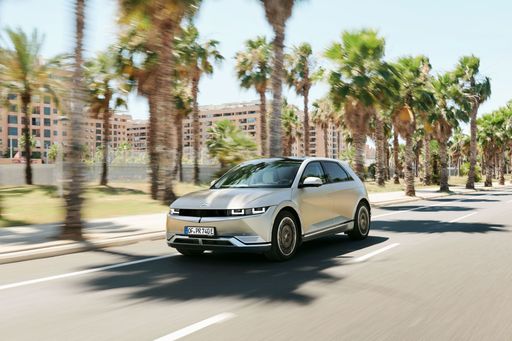 @ hyundai.news
@ hyundai.news
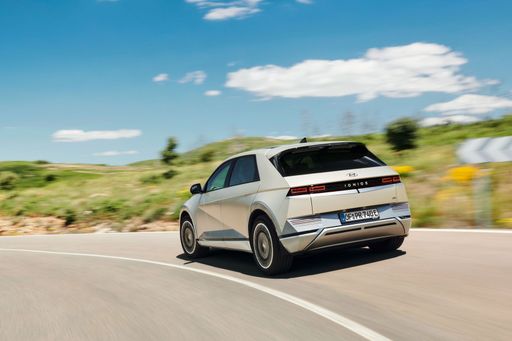 @ hyundai.news
@ hyundai.news
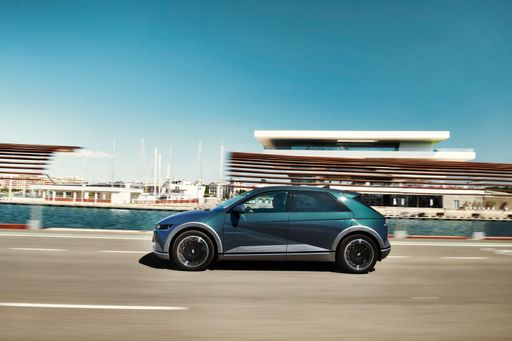 @ hyundai.news
@ hyundai.news
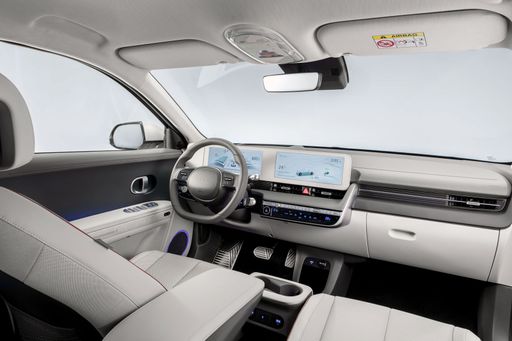 @ hyundai.news
@ hyundai.news
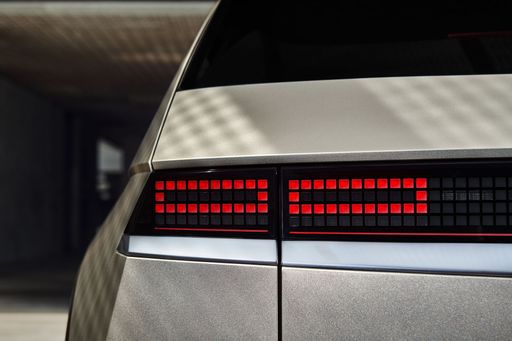 @ hyundai.news
@ hyundai.news
Toyota Proace Max
The Toyota Proace Max is a versatile vehicle that seamlessly combines functionality with style. Its spacious interior is designed to accommodate both passengers and cargo comfortably, making it an ideal choice for families and businesses alike. With a sleek exterior and a range of advanced features, the Proace Max stands out in its class, offering a reliable and efficient driving experience.
details

|
|
|
|
|
Costs and Consumption |
|
|---|---|
|
Price
37600 - 64200 £
|
Price
35500 - 61000 £
|
|
Consumption L/100km
-
|
Consumption L/100km
7.8 - 8.7 L
|
|
Consumption kWh/100km
15.6 - 21.2 kWh
|
Consumption kWh/100km
-
|
|
Electric Range
440 - 570 km
|
Electric Range
424 km
|
|
Battery Capacity
63 - 84 kWh
|
Battery Capacity
-
|
|
co2
0 g/km
|
co2
0 - 229 g/km
|
|
Fuel tank capacity
-
|
Fuel tank capacity
90 L
|
Dimensions and Body |
|
|---|---|
|
Body Type
SUV
|
Body Type
Cargo Van
|
|
Seats
5
|
Seats
3 - 7
|
|
Doors
5
|
Doors
4 - 5
|
|
Curb weight
1955 - 2275 kg
|
Curb weight
2075 - 2790 kg
|
|
Trunk capacity
480 - 520 L
|
Trunk capacity
-
|
|
Length
4655 - 4715 mm
|
Length
5413 - 6363 mm
|
|
Width
1890 - 1940 mm
|
Width
2050 mm
|
|
Height
1585 - 1605 mm
|
Height
2254 - 2774 mm
|
|
Payload
385 - 530 kg
|
Payload
710 - 1460 kg
|
Engine and Performance |
|
|---|---|
|
Engine Type
Electric
|
Engine Type
Diesel, Electric
|
|
Transmission
Automatic
|
Transmission
Manuel, Automatic
|
|
Transmission Detail
-
|
Transmission Detail
Manual Gearbox, Automatic Gearbox
|
|
Drive Type
Rear-Wheel Drive, All-Wheel Drive
|
Drive Type
Front-Wheel Drive
|
|
Power HP
170 - 609 HP
|
Power HP
120 - 279 HP
|
|
Acceleration 0-100km/h
3.5 - 8.5 s
|
Acceleration 0-100km/h
-
|
|
Max Speed
185 - 260 km/h
|
Max Speed
130 - 161 km/h
|
|
Torque
350 - 740 Nm
|
Torque
320 - 450 Nm
|
|
Number of Cylinders
-
|
Number of Cylinders
4
|
|
Power kW
125 - 448 kW
|
Power kW
88 - 205 kW
|
|
Engine capacity
-
|
Engine capacity
2184 cm3
|
General |
|
|---|---|
|
Model Year
2024
|
Model Year
2024 - 2025
|
|
CO2 Efficiency Class
A
|
CO2 Efficiency Class
G, A
|
|
Brand
Hyundai
|
Brand
Toyota
|
Hyundai IONIQ 5
Introducing the Hyundai IONIQ 5: A New Era in Electric Mobility
The Hyundai IONIQ 5 is a revolutionary addition to the electric car market, blending futurist aesthetics with ingenious technological features. As part of Hyundai's all-electric lineup, the IONIQ 5 exudes a refreshing approach to sustainable motoring, offering a blend of power, efficiency, and innovation that is set to transform everyday driving.
A Futuristic Design
The IONIQ 5 sets new standards in automotive design with its distinctive silhouette. Its clamshell bonnet and pixelated LED light design form a unique visual signature, evoking a sense of modernity and advancement. Built on Hyundai's Electric-Global Modular Platform (E-GMP), this SUV heralds a new direction for electric vehicles, serving both form and function with a flat floor that maximises interior space.
Performance and Efficiency
The Hyundai IONIQ 5 offers a variety of powertrains to cater to different driving preferences. Depending on the model, power output ranges from 170 PS to a staggering 609 PS, with corresponding torque between 350 Nm and 740 Nm. These configurations enable a brisk acceleration capability, reaching 0-100 km/h in as little as 3.5 seconds.
The car’s battery options of 63 kWh and 84 kWh provide flexibility between range and performance. The efficiency of the IONIQ 5 is admirable, with a consumption ranging from 15.6 to 21.2 kWh/100km, ensuring the capability to travel up to 570 km on a single charge.
Innovative Technology
The IONIQ 5 isn't just about efficient propulsion; it's laden with cutting-edge technology that enhances the driving experience. The vehicle includes an ultra-fast charging capability, able to reclaim 80% of the battery life within just 18 minutes. This is complemented by Vehicle-to-Load (V2L) technology, which turns the IONIQ 5 into a power source to charge devices or even other electric vehicles.
Comfort and Convenience
Inside, the IONIQ 5 continues to impress with a spacious and flexible cabin that maximises comfort and utility. Its minimalist dashboard, dual 12.3-inch screens for infotainment and digital instrument cluster, and extensive use of eco-friendly materials contribute to a serene driving environment.
Safety Meets Innovation
Hyundai has equipped the IONIQ 5 with an array of advanced driver assistance systems. These include features such as Smart Cruise Control, Highway Driving Assist, and Remote Smart Parking Assist, ensuring that safety is paramount without sacrificing convenience.
The Future of Sustainable Driving
With a CO2 efficiency class of A and zero emissions, the Hyundai IONIQ 5 signifies a shift towards more sustainable driving practices. Its blend of technology, performance, and aesthetic appeal positions it as a pivotal player in the electric vehicle market, paving the way for a cleaner, greener future in automotive design.
Toyota Proace Max
Introducing the Toyota Proace Max: A Versatile Powerhouse
The Toyota Proace Max is a transport vehicle designed for those who need both muscle and adaptability in their daily operations. As a strong contender in the world of vans, the Proace Max impresses with a range of configurations and specifications tailored to meet commercial needs across different sectors.
Technical Excellence and Versatility
Underneath its robust exterior, the Toyota Proace Max boasts a 2.2-litre diesel engine that provides a commendable range of power outputs from 120 to 180 PS. The versatility of this van is further expanded by the choice between manual and automatic transmissions, ensuring a smooth ride no matter the conditions or preferences of the driver.
With front-wheel drive, the Proace Max delivers reliable traction and handling, even when tackling the tougher terrains. Its carbon dioxide emissions, ranging from 198 to 229 g/km, are a testament to Toyota’s ongoing commitment to balancing performance with environmental responsibility.
Innovative Design and Features
Designed with practicality and functionality in mind, the Proace Max satisfies with a payload capacity of between 1,142 kg and 1,475 kg. This, paired with its generous interior space, makes it ideal for transporting goods, equipment, or personnel.
The van offers several trim levels including Meister, Select, and with an automatic option in Meister and Comfort, all of which provide differing levels of equipment to cater for a wide range of business needs. This ensures that the Proace Max is adaptable, able to transition from a simple workhorse to a more comfortable, feature-rich transport solution with ease.
Fuel Efficiency and Environmental Considerations
The Proace Max manages an impressive fuel consumption rate between 7.5 and 8.7 L/100km, proving economical over longer distances. Its CO2 efficiency class rating of G reflects the necessity for optimum performance balanced with environmental considerations.
This balance of power and efficiency positions the Proace Max as a formidable competitor in its segment, providing a dependable and efficient solution for businesses concerned with both operational costs and environmental impact.
Spacious and Customisable Interior
Inside, the Proace Max accommodates between 2 to 6 seats, depending on the chosen configuration, making it suitable for varying needs whether for transporting crew or cargo. Its dimensions, with a length of up to 6,363 mm and height variants that reach up to 2,764 mm, ensure maximum capacity and flexibility.
For companies that require adaptable transport solutions, the Proace Max allows for significant customisation potential, ensuring the vehicle can be tailored to suit precise requirements.
Conclusion: The Ideal Workhorse
Priced between €41,472 and €64,629, the Toyota Proace Max ensures businesses can invest in a robust, innovative, and flexible transport solution without compromising on capability or efficiency. Designed to meet the demands of various commercial tasks, the Proace Max solidifies its position in the market with its innovative features, versatility, and outstanding performance.
The prices and data displayed are estimates based on German list prices and may vary by country. This information is not legally binding.
